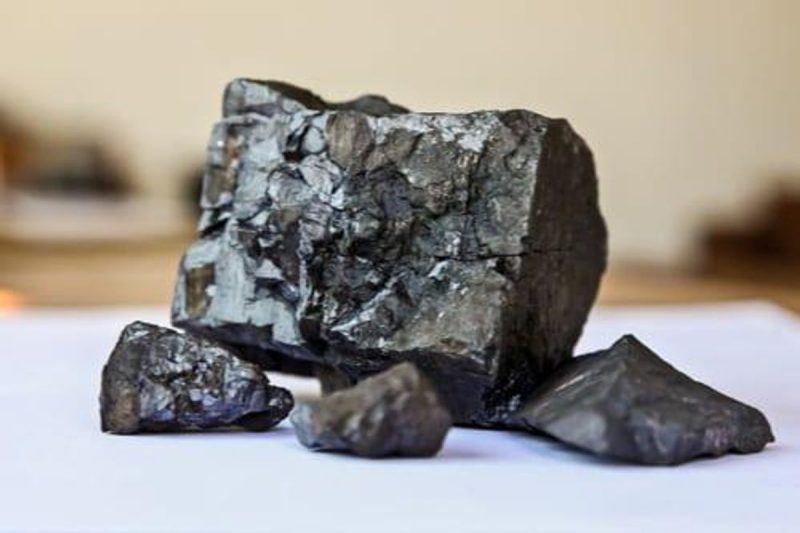Caught up in the same volatility impacting many metals in 2023, manganese prices have trended downward on China’s slowing economic recovery and worsening global inflationary pressures.
Despite not being widely known, manganese is an important raw material for the steel industry. In fact, it is the fourth most common metal by tonnage, just after iron, aluminum and copper. It also has growing applications as a battery metal.
How did manganese perform in 2023?
For much of the year, the market has remained oversupplied amidst tepid demand and despite global manganese ore production remaining flat.
The manganese market is inextricably linked to the steel market as more than 97 percent of annual manganese production is used in steelmaking. And as Andrew Zemek of CPM Group points out, the steel industry is not in great shape.
This was despite China–the largest global steel producer–recording a year-over-year 1 percent rise in steel production alongside a 2 percent increase in the rest of Asia in the first ten months of 2023. This dynamic led to manganese ore prices declining by 10 to 20 percent from the start of 2022. Meanwhile, international prices for manganese ferroalloy–which are smelted directly rom ore–are 20 to 40 percent lower as of early December.
China is the largest consumer of manganese, mainly as feedstock for its steel sector. Although the Asian nation is the fourth largest producer of manganese in the world, it is also responsible for 90 percent of global manganese refining and is the largest importer of the metal.
According to a report from Fastmarkets, increased manganese imports, despite the overhang in the supply of ore material in China, has weighed heavily on manganese prices in 2023. “According to China customs data, the country imported a combined 15.38 million tonnes of manganese ore in the first six months of 2023, up by 9.03% from imports in the first half of 2022,” stated the firm’s analysts.
All of this at a time when China’s debt-ridden property market, a major source of demand for steel, has been in the doldrums for most of the year. “The key single factor affecting manganese demand is the situation of the Chinese construction sector,” explained CPM Group’s Andrew Zemek. “Silicomanganese (SiMn) is the most important manganese ferroalloy, which is mostly used in the production of concrete reinforcing bars (re-bars).”
Zemek noted that re-bar production in China was six percent lower in the first 11 months of 2023 as compared to the same period in 2022, resulting in 8.1 million tonnes of “lost” re-bar production, or 163,000 tonnes of “lost” SiMn demand.
What is the manganese supply and demand forecast for 2024?
Heading into 2024, the forecast for manganese supply and demand is slightly better than the previous year; however, much of that depends on which way the wind blows for China’s economy and the global steel industry.
The World Steel Association is projecting 1.8 percent growth in global steel demand for 2023, and another 1.9 percent increase in 2024, with a slower recovery expected in the developed economies compared to their emerging counterparts, particularly in Asia. “We expect the situation in China’s property market will stabilise in the latter part of the year and China’s steel demand will record slight positive growth thanks to government measures,” the association said in its October 2023 short range outlook.
China’s National Development and Reform Commission announced consumption stimulus measures mid-year, with a focus on auto, property and consumer goods such as appliances and electronic products. All of which should be beneficial for ferromanganese demand, but with Chinese consumers facing economic restraints it remains to be seen if demand from these sectors will improve enough to bolster the manganese market.
Given these factors, the Project Blue team expects to see a more positive demand outlook for manganese this coming year: “Our 2024 demand estimate is in line with an expected recovery in the Chinese economy, with China dominating 54 percent of the steel market. The property stimulus, depending on additional government incentives, will affect overall ore demand.”
Outside of China, critical manganese supply and demand factors are also taking shape. One such region is India, the world’s sixth largest producer of the metal and one of the world’s largest consumers as well.
The vast majority of India’s manganese goes to the production of steel. This will be a necessary component of reaching its 2040 Vision which includes the buildout of massive airport hub infrastructure. The World Steel Association is predicting steel demand in India “to show healthy growth” of 8.6 percent in 2023 and 7.7 percent in 2024. Although this is down from 9.3 percent in 2022. “India is expected to see an increase in both manganese ore production and import, as the country moves towards implementing its 2040 Vision,” said Project Blue.
On the supply side, the Project Blue team is watching supply chain logistical challenges, including reduced rail capacity and port delays, in South Africa–the world’s number one producer of the metal. The firm reports that state-owned Transnet has reportedly received US$2.5 billion to assist with the operational challenges for both its port and rail facilities.
As for new manganese production, CPM Group says there are about 60 development-stage manganese ferroalloy projects scheduled to start production through now and 2025– nearly all of which are outside of China. If all these new projects in the pipeline are brought online, the impact on the global market would be about a 6 percent increase in manganese ferroalloy production capacity. This figure outpaces that of the expected growth in steel production.
“But it is not certain if all of them will go ahead, bearing in mind the current over capacity and a general economic climate, and very modest expectations regarding steel production,” stated Zemek. “With Chinese dominance in manganese ferroalloys production these new projects outside China will not change much in the overall picture of geographical distribution of production.”
In terms of pricing, Zemek points to Fastmarkets’ expectations that global ferroalloy prices could grow by about seven percent in the first six months of 2024; however, that gain is likely to be erased by the third quarter of the year. As for manganese ore prices in 2024, Zemek is looking for a moderate rise to about US$520/mt before falling again in the fourth quarter to around US$495, an increase of 8 percent over prices in the same quarter of 2023 prices.
For its part, Project Blue “expect(s) ore prices to remain under pressure moving into 2024 due to the uncertainty facing the Chinese steel and construction market.” The firm sees Chinese domestic demand supporting higher ore and alloy prices in the short term; and a potential global economic recovery in 2024 returning prices to a cost-driven level in the medium term.
“Thereafter, our price forecast is more driven by fundamentals and the need for new capacity to be developed,” they added. “We expect prices in China to rise in the second half of the decade.”
What factors will move the manganese market in 2024?
Outside of the basic supply and demand fundamentals, what trends should manganese market watchers be on the lookout for in 2024?
“A general conclusion from analyzing the 2023 manganese market is that we won’t see any fireworks in 2024,” said Zemek. However, investors may see market events that could lead to moderate price growth for some manganese products, particularly electrolytic manganese metal, high-purity manganese sulphate monohydrate, as well as certain manganese ferroalloys.
Of course, the main driver of the ferroalloy market will continue to be China’s economic health and the consequences for its construction and steelmaking sectors. “Whatever is happening in the steel sector globally (and in China in particular) translates into demand for manganese (with some delay),” said Zemek. This means keeping an eye on any material impact of China’s economic stimulus measures as well as any additional measures that may come in 2024.
Although today’s manganese market is highly concentrated on the steel sector, growth in the battery sector is another area for investor attention, particularly for chemical high-purity manganese products used by electric vehicle (EV) battery manufacturers.
“Several high-manganese rechargeable battery chemistries have been developed in recent years, but many will only enter mass production in Q4/2023 and 2024,” said Zemek. “This should reduce the current surplus of high-purity manganese sulphate and lift the prices from their doldrums.”
The team at Project Blue is also keeping an eye on this segment of the market. The firm expects that while prices for manganese sulphate will remain under pressure in 2024, over the long-term prices will gain support from rising demand from the EV battery sector which will require a large-scale build-out of new manganese sulphate production capacity.
While China is expected to remain the major producer of battery-grade manganese sulphate moving into 2024, one of the key catalysts for this submarket that should be on investors’ radar is recent funding for several ex-China projects which could move them closer to development in the new year.
“We estimate that existing producers will be able to supply the market via increases in capacity utilization until about 2027, but that, thereafter, new supply will be required if supply is to meet demand” stated Project Blue analysts. “We expect high-purity manganese sulphate prices to follow a similar trend to ore and metal prices for the next two years with costs driving prices.”
CPM Group is also watching government policy and funding initiatives that may prove beneficial for ex-China manganese sulphate projects; for example, the US Inflation Reduction Act and the EU’s Critical Minerals Act. “However, most of the non-Chinese projects in the pipeline are scheduled to start production by 2026-27, so we’ll not see much change in 2024-25,” said Zemek.
He added that the high-purity manganese sulphate subsector only represents less than 2 percent of the overall market, and is currently oversupplied to the detriment of prices for this product. This low price environment will likely pose funding challenges for new battery-grade manganese projects, leading to possible production timeline delays and future supply deficits.
Securities Disclosure: I, Melissa Pistilli, hold no direct investment interest in any company mentioned in this article.







































